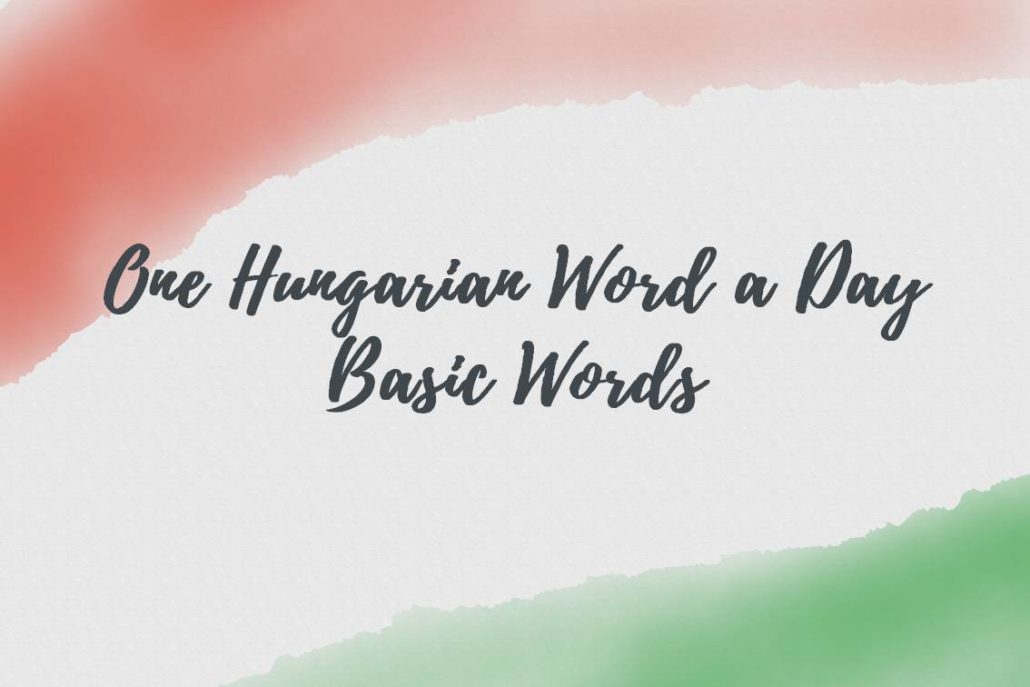Nyúl

Nyúl
Meaning:
to reach (for sth.), rabbit (two completely separate meanings)
Example sentences:
Ma reggel láttam egy nyulat a mezőn.
Today morning saw-I a rabbit(acc.) the meadow-on.
I saw a rabbit on the meadow this morning.
A kisbaba az anyukája után nyúlt.
The baby the mother-his/hers after reached.
The baby reached for his/her mother.
Related terms to nyúl as rabbit:
emlős – mammal
húsvéti nyuszi – Easter bunny
lepus – hare
nyuszi – bunny (“cuter” word for rabbit, used for children but also among adults)
nyuszifül – bunny ear (often used as term of endearment for children
ugrabugrál – to scamper
Related terms to nyúl as to reach:
elér – to be able to reach (ie. to catch barely), also: to achieve
érint – to touch
fog – to hold (also: tooth, will (modal verb))
kéz – hand
vesz – to take
Not to be confused with:
nyúlik – to extend, to drag on, to have the consistency of dough or chewing gum
nyúlós – doughy
Pronunciation of today’s word:
Pronunciation of the Example Sentences:
Today morning saw-I a rabbit(acc.) the meadow-on.
I saw a rabbit on the meadow this morning.
The baby the mother-his/hers after reached.
The baby reached for his/her mother.
Pronunciation of the Related Terms:
Did you like today’s word? Do you have a favorite memory hook for it or do you get it into your brain in a completely different way? Did we miss something in the explanation?
Share your thoughts, word visualizations or learning tips below in the comments and remember, the more you use a new word, the easier it will stick in your memory!




Kedves Juli & Flo
I am confused about the sentence example of today’s word, nyúl. You wrote:
A kisbaba az anyukája után nyúlt.
The baby the mother-his/hers after reached.
The baby reached for his/her mother.
Where does “után” (after) occur in the translation, “The baby reached for her mother”? (Reached after what?)
And, what is the form of the word, “anyukája”? It is not the object of “nyúlt”, is it? Otherwise, it would be “anyukájat”, wouldn’t it?
Please explain further how you go from “A kisbaba az anyukája után nyúlt.” to “The baby the mother-his/hers after reached.” and end up with “The baby reached for his/her mother.”.
Kőszönöm szépen.
Józsi
Után normally gets translated as after, but in this case for as in English the idiom is reach for rather than reach after
Think translation of hare should be mezei nyúl rather than lepus which is Latin
Thank you Michael, for your explanation of után. I am still interested in the explanation of the case of anyukája. Is “anyukája” a subject, or the object of the verb, “nyúlt?” If it is the object, shouldn’t “anyukája” be changed to “anyukájat?” If it is not the object, then where does “anyukája” fit in the structure of the sentence?
Kőszönöm szépen.
Józsi
Szia Joseph!
This is a possessive relationship between the baby and the mom – the mom is the possession of the baby. She’s not the object in this case, as there’s no direct action on her. The baby is just reaching for/after her.
In the sentence “The baby touches its mom” she’d be the object and the sentence would go “A kisbaba megérinti az anyukáját” – here you have the accusative case attached to the mom.
I hope this helps?
Juli